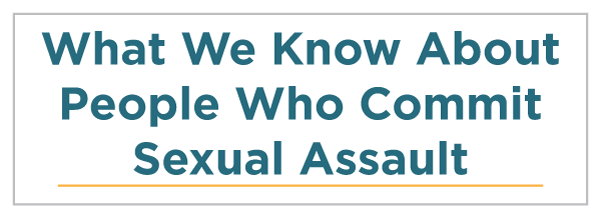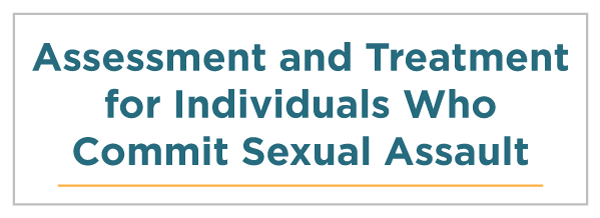
 |
 |
 |
 |
A comprehensive risk assessment of a sex offender estimates the offender’s risk of future sexual offending. Risk assessment is intended to direct professionals toward the most effective interventions and treatment to reduce, contain, or eliminate an offender’s risk of recidivism.
Whether for an adult or an adolescent, a comprehensive risk assessment considers the dynamic risk factors (e.g., characteristics of an individual or found in an individual’s social environment that are amenable to change, such as substance abuse, social isolation) and static risk factors (e.g., history of sexual assault, age at time of the assault), as well as directly or indirectly any protective factors (e.g., involvement in appropriate social activities, supportive peers or family, prosocial values) that may reduce the risk for re-offense.
Methods of assessing sex offender risk typically involve both an in-person clinical assessment as well as a variety of assessment tools. Key to the assessment process is a well-developed and validated risk assessment instrument, based on research with the appropriate population, and knowing which one to use. Non-clinical staff can complete some risk instruments, for both adults and adolescents, that can be helpful for multidisciplinary team usage. However, training is essential to ensure proper usage and accurate scoring.
Below are some tools to learn more about risk assessment instruments:
The inclusion of protective factors in risk assessment is part of a larger move away from a singular focus on deficits and psychopathology toward a view that incorporates consideration of an individual’s assets and strengths. [43] With adolescents, it is important to assess factors that help protect against or mitigate risk, such as positive familial support, prosocial peers, access to education, employment opportunities, and prosocial extracurricular activities. Recent research found that inclusion of protective factors in the risk assessment process increased accuracy. [44]
Broad-based treatment approaches that apply equally to all individuals who engage in sexual assault are at best likely to be ineffective, and at worst may place victims and the community at greater risk.
Given the diversity of this population and the complexity of this issue, any approach to treatment needs to be targeted to the individual. The risk-need-responsivity (RNR) principles provide a critical framework for designing and delivering interventions for those who sexually assault. The RNR approach targets the individual’s risk and needs, and responds to the motivations, cognitive abilities, and other characteristics of each individual offender. [45]
The principles of effective intervention are outlined below: [46]
Criminal justice interventions based on the RNR principles, including treatment and interventions for those who commit sexual assaults, have been shown to be effective in reducing future recidivism, particularly with moderate to high-risk offenders. [47]
For more information related to the RNR principles, see the Sex Offender Management Assessment and Planning Initiative (SOMAPI) report Chapter 5: Adult Sex Offender Recidivism and Chapter 7: Effectiveness of Treatment for Adult Sex Offenders.
Adults who commit a sexual crime are as diverse and complex as any other population. Existing treatments can assist many, but not all, of those who commit sexual assault. Some sex offenders can learn to control their behaviors and thereby significantly reduce their risk of re-offending.
Treatment has been particularly successful for certain sub-populations such as adolescents, those who sexually abuse without the use of violence or drugs, and adult men who sexually offend against female children within the family. [48] Success in treatment is contingent upon the use of sex-offense-specific treatment and the willingness and ability of the offender to cooperate with treatment. [49]
Read further information on effective treatment for adult offenders.
Overall, research supports the efficacy of treatment for adolescents who have sexually assaulted in reducing both sexual and non-sexual recidivism. As knowledge about the developmental, motivational, and behavioral differences between adolescents and adults who commit sexual assaults has increased, therapeutic interventions for adolescents have become more responsive to the diversity and developmental nature of sexually abusive behaviors.
Treatment that involves family, peer, school, and community systems is now seen as essential. In particular, cognitive-behavioral and multi-systemic family approaches are frequently considered effective treatment models, as measured by outcome variable(s). [50] Some adolescents stop offending without any further intervention or treatment, and if they re-offend at all, they are more likely to commit a subsequent non-sexual rather than a sexual offense. [51] For more information, see chapter 5 of the SOMAPI report.
The National Center on the Sexual Behavior of Youth is one of the primary developers of treatment programs for children with sexual behavior problems. When working with children, an age-appropriate cognitive-behavioral approach that includes a significant trauma focus is effective in reducing future sexual behavior. [52]
The Association for the Treatment of Sexual Abusers
ATSA offers resources on research, practice, policy, prevention, and education.
This organization offers information about treatment and referrals.
Stop it Now! focuses on educating adults on how to prevent abuse and mobilizing communities to use prevention initiatives.
Local sex offender treatment providers (e.g., state sex offender management boards, local provider networks) can also be a resource for information and referrals and may be helpful in identifying specialized treatment resources in a given locale.
| Back | Index | Next |
